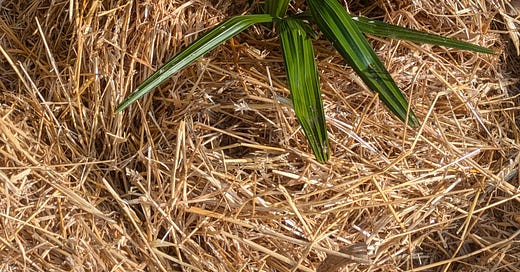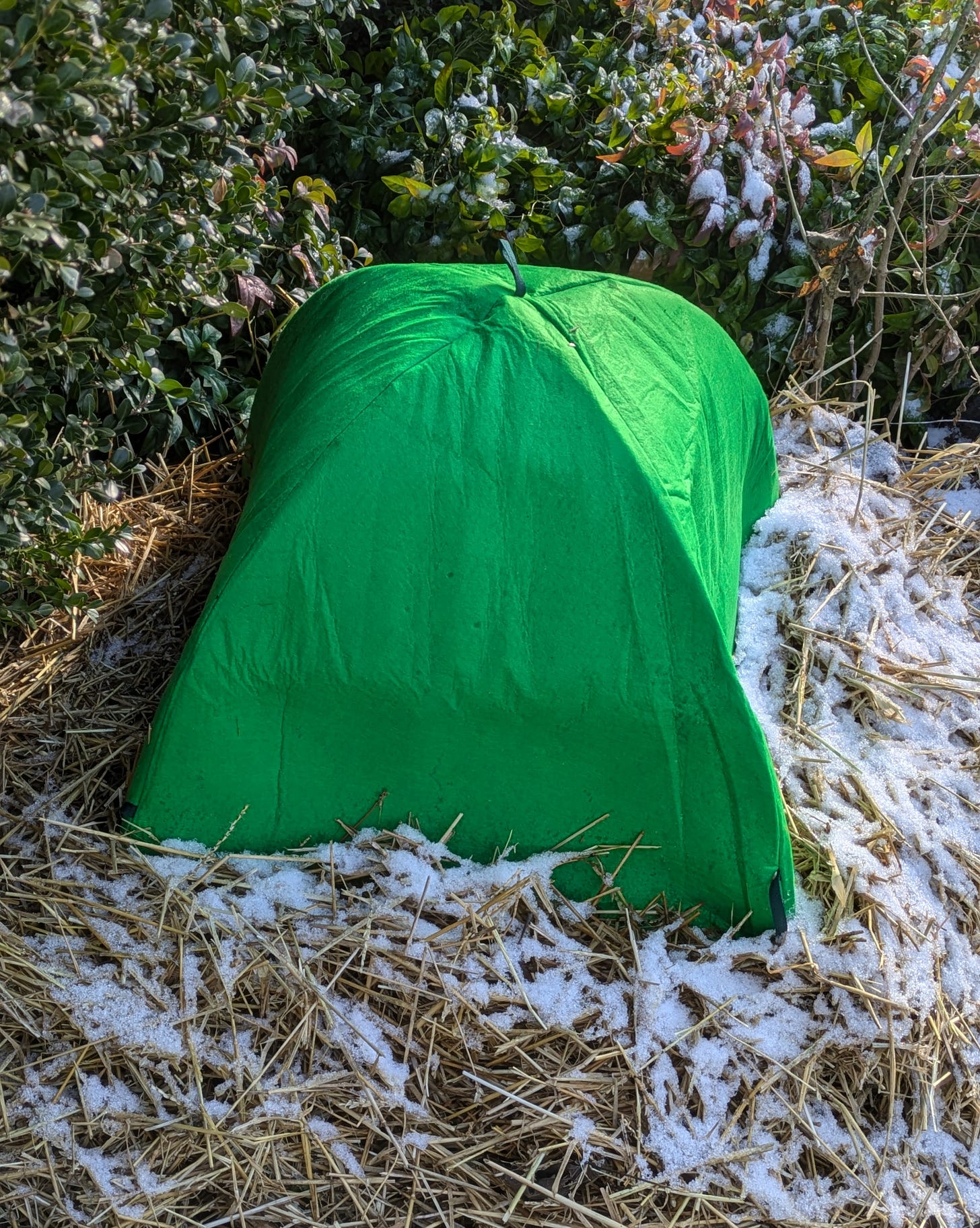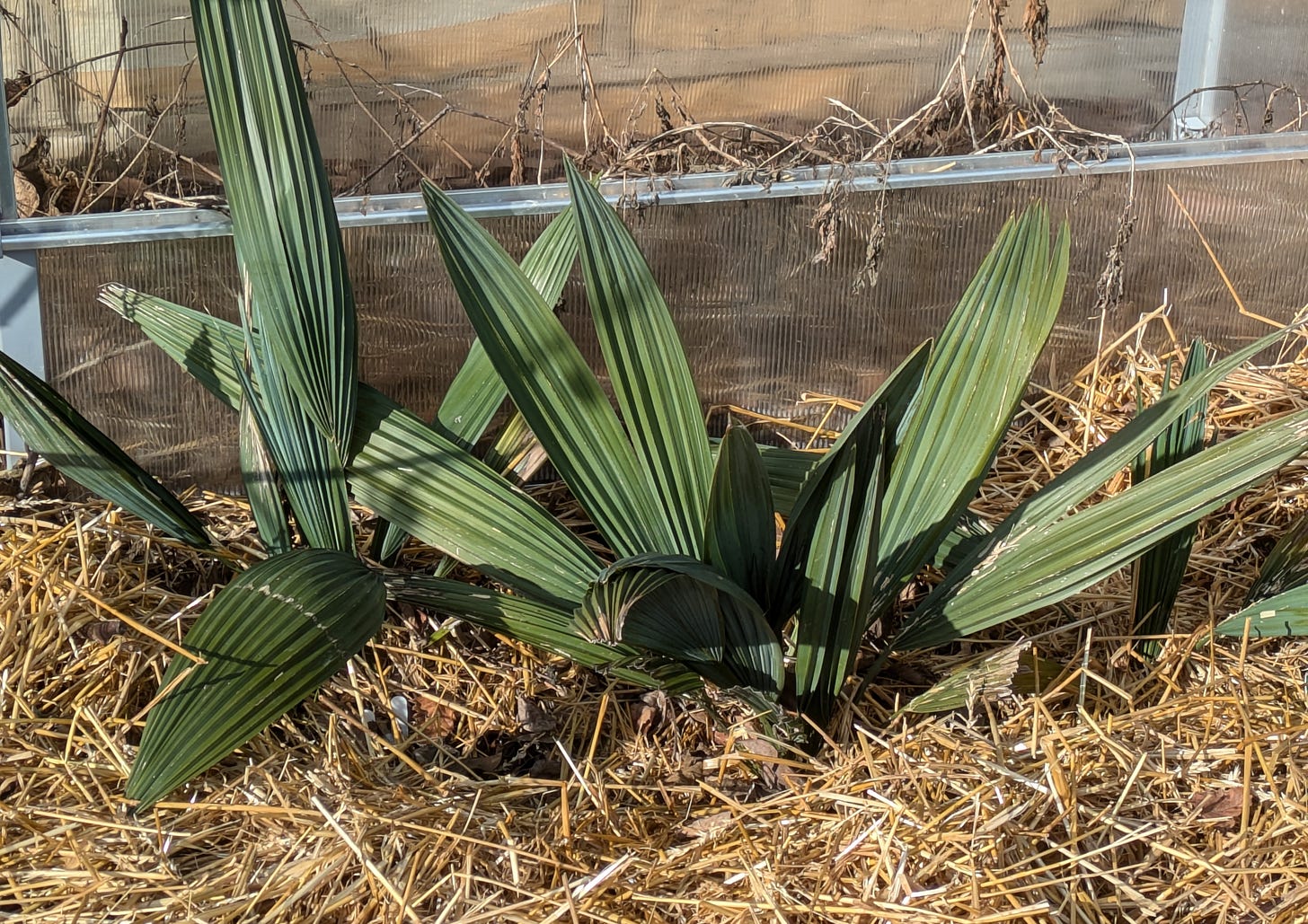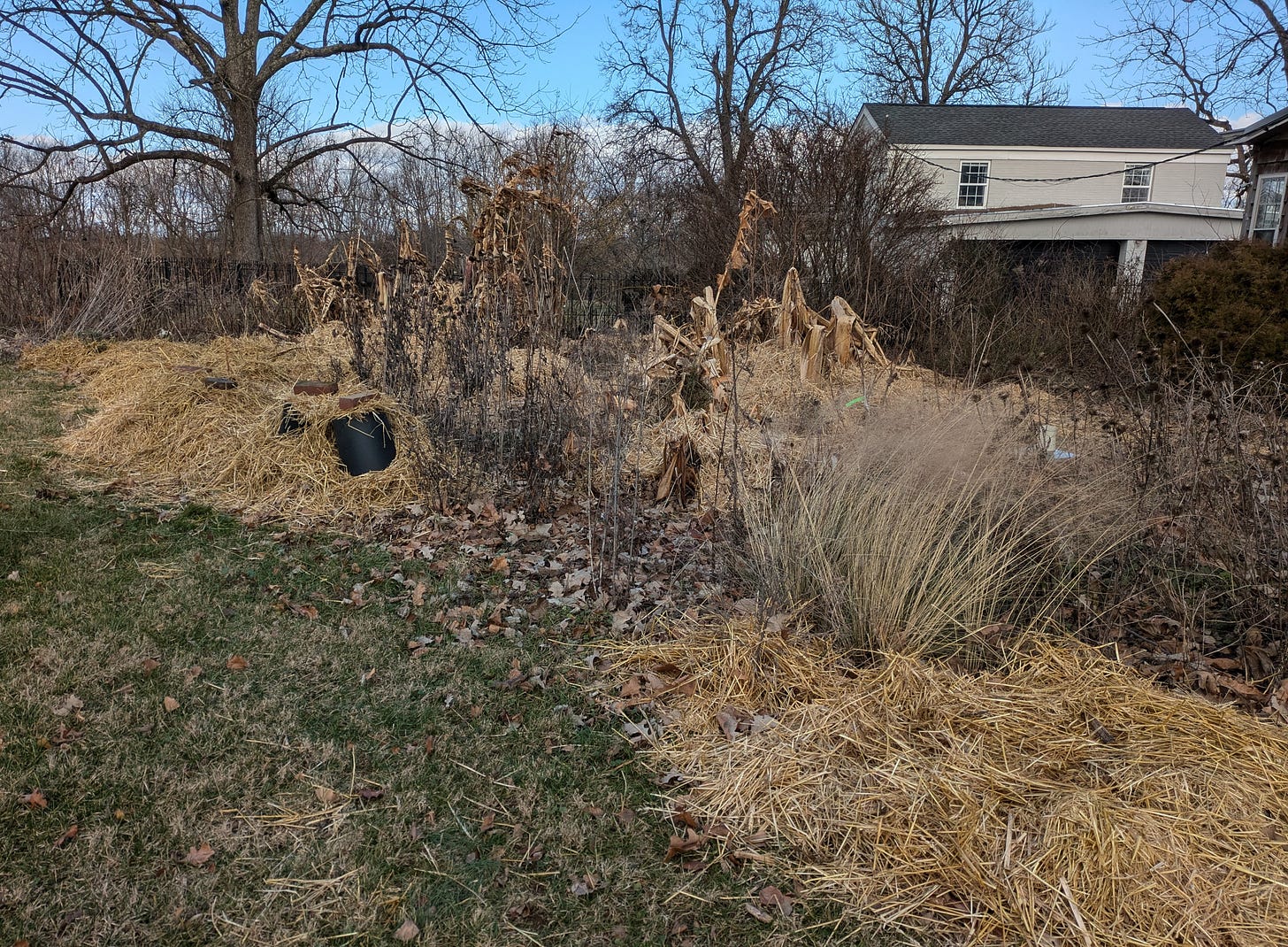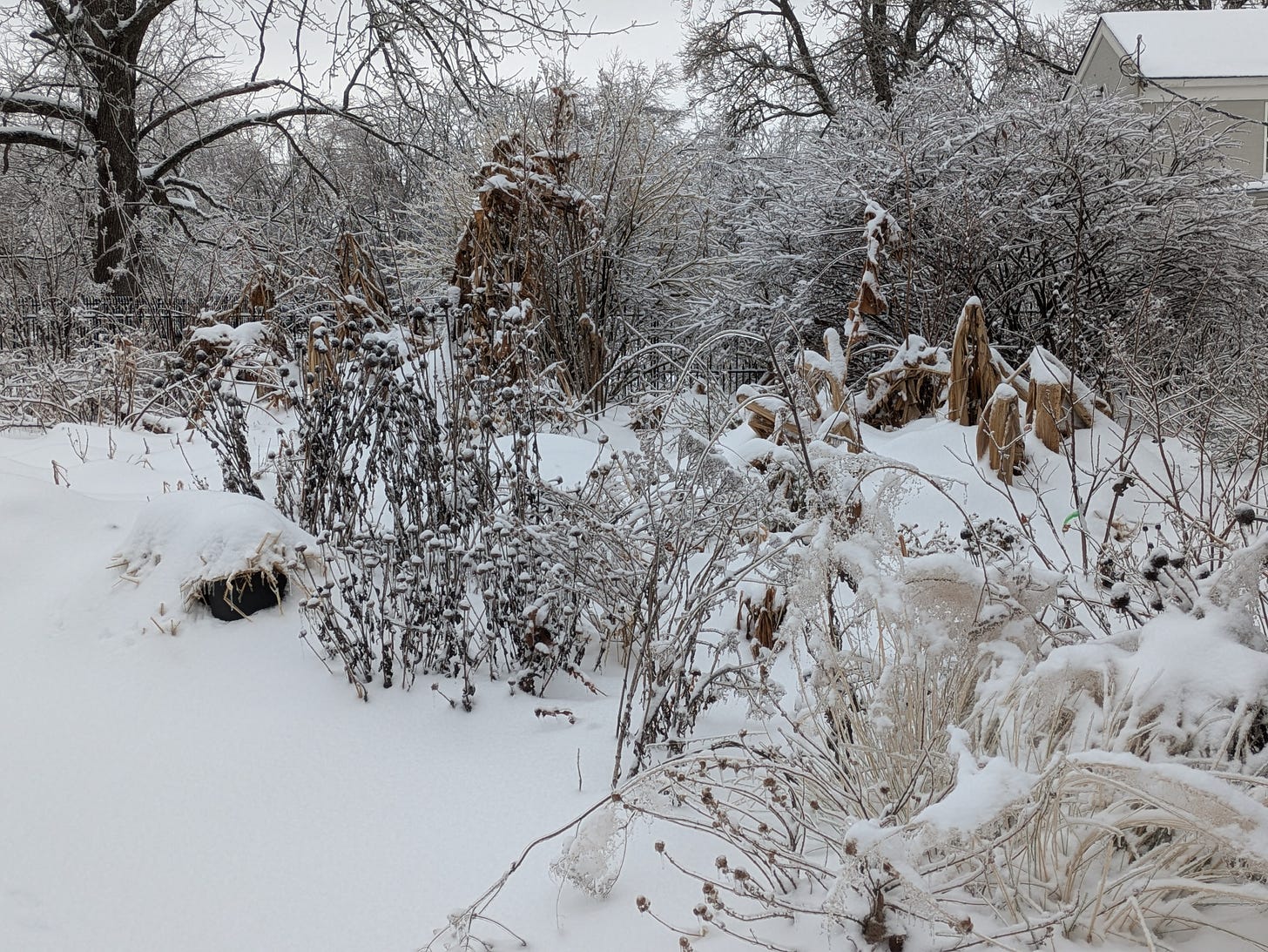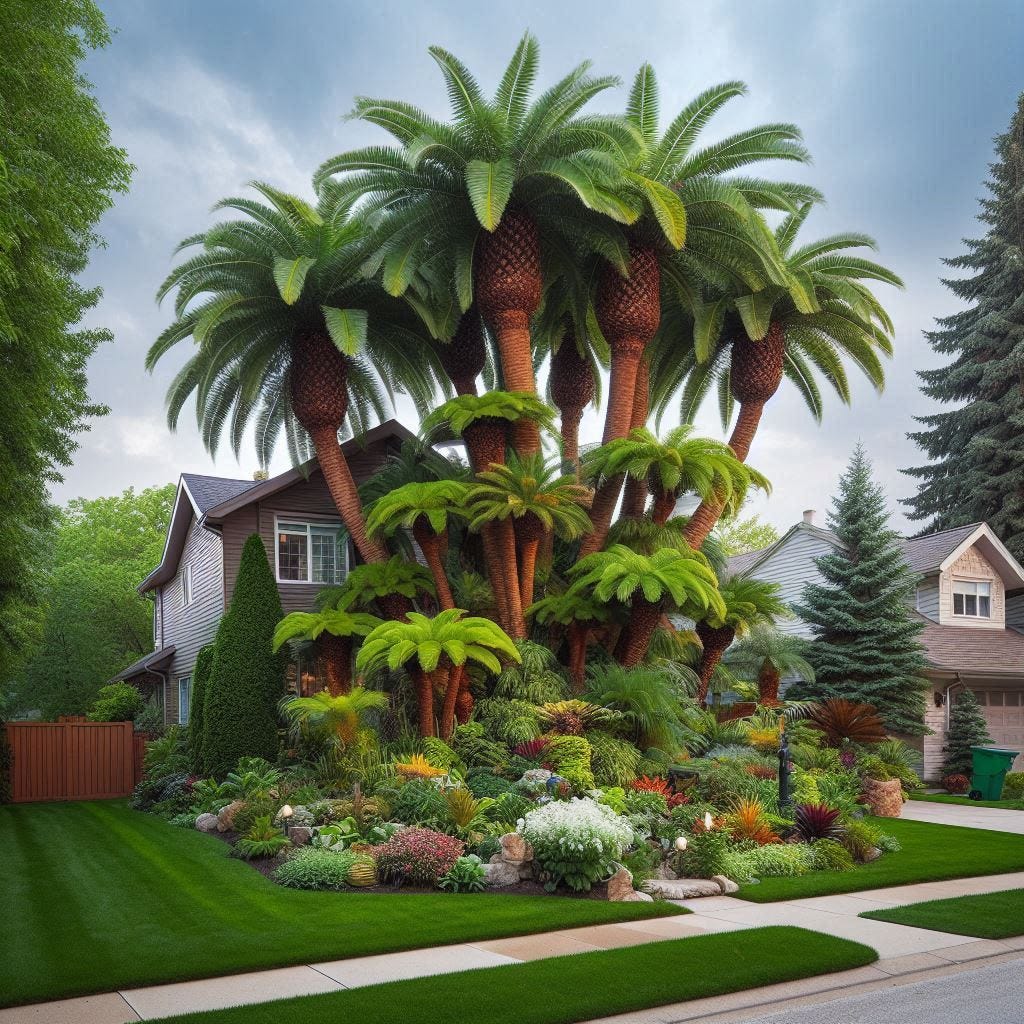Cuddle up, baby
Cuddle up, tight
Cuddle up, baby
Keep it all out of sight
Undercover
-The Rolling Stones
After a relatively mild December with multiple highs in the 50s, January roared in with colder than normal temperatures and a storm that dropped 4 inches of snow, followed by freezing rain and a glaze of ice, with several inches of snow having since fallen on top of that. Storm forecasts for 0.4 to 0.6” inches of ice accumulation had us in full power outage preparation mode, but we ended up with maybe half as much ice and a few moderate-sized tree limbs down but no blackout thus far. The experience kindled memories of the winter of ‘20-’21, when we had three separate episodes of freezing rain over 7 days accompanied by temps that never got above freezing. The current chill with highs in the 20s and 30s and a couple of nights with lows down to 12-14F hasn’t been pleasant, but I’ll settle for having power and a supply of hot cocoa.
Fortunately, my final preparations for garden protection were completed a few days before the storm hit.
Strategies for protecting garden plants from the ravages of winter in temperate climates generally have two important goals: to eliminate or at least limit damage from the coldest temperatures, and to prevent ground heaving caused by alternating frigid and mild spells, which potentially expose susceptible plant crowns and roots to cold damage.
The first goal is paramount for those of us pushing zone boundaries with plants “rated” for zones milder than ours, but which do well long-term if sited properly and adequately mulched or otherwise covered up against the cold. This is the first winter for our young needle palm, Rhapidophyllum hystrix.
R. hystrix is widely viewed as the most winter-hardy of all palm species, surviving well into zone 6 (average coldest winter low 0 to -10F) for many growers. My foot-tall specimen was planted in a front border with southern exposure, sunlight filtered to a degree by a nearby Northern catalpa tree, with shelter from northwesterly winds provided by the house and a tall hedge. The palm had three and a half months to grow modestly and establish its root system, aided by an unseasonably late frost which didn’t arrive until late November. In spite of these advantages I decided not to take chances and arranged a protection scheme employing two seedling heat mats placed at the perimeter of its growing area, to be powered on when needed (anything below 25F), along with a commercial “frost tent” billed as protecting plants down to 5F. One is best advised to be skeptical about claims for such coverings providing more than a few degrees of added warmth. At least, they should provide shelter from desiccating winds and a partial shield from dampness. It’s a good idea not to mulch right up against the trunk if the mulching material is going to get soggy, so as to avoid promoting rot. The heat mat idea is partially designed to keep the ground around the palm warm enough to allow uptake of water and prevent it from drying out. To date, temps inside the tent have been anywhere from 7 to 20 degrees warmer than the outside temperature, with readings in the upper 30s to low 40s.
I would treat website reviews of plant “tents” and covers with caution, as some give the impression of being motivated by product placement instead of being based on practical gardening experience.
When I posted info and photos of this protection scheme to a Facebook group devoted to raising ornamentals in defiance of accepted zonal wisdom, the responses were…mixed. Numerous commenters, not paying attention to the vulnerability of a young plant, declared that needle palms are so rock-hardy that I shouldn’t be protecting it at all in my climate. A minority view supported my efforts, with one poster saying substantial protection was warranted for several years after planting.
I can only imagine what the responses would be if I posted photos showing how I protect dwarf palmettos, some of which rival needle palms in cold tolerance. Here’s a photo of a grouping of Sabal “Louisiana” raised from seed, now early in its third winter in-ground, having shrugged off 16F so far this winter.
I have routinely spread abundant straw mulch around the base of these dwarf palmettos, covering each with more mulch and a large planter tub to keep them relatively dry during the worst cold spells. That’s enabled them to come through with no more than mild foliar damage, which they make up for the following season. Next spring I’ll be planting more seed-grown Sabals, including one said to be the hardiest of the bunch, Sabal ‘McCurtain’, which hails from McCurtain County in southern Oklahoma where it has reportedly survived temps down to -24F. Waiting in the wings are several other seed-grown varieties of Sabal including ‘Birmingham’, ‘Oregon’ and Sabal x texensis, which grew around the bayou running through our place in Brazoria County, Texas. A ‘Brazoria’ palmetto grew for several years in a partially shaded front border at our prior home in central Ohio, getting killed back to the ground each winter before finally succumbing.
I may never get to see a substantial trunk from any of our palmettos, but the foliage provides subtropical flair.
I had anticipated this being a winter when I would go without mulching some long-established plantings, like hardy bananas Musa basjoo, M. sikkimensis and M. ‘Mekong Giant’, all of which have come through the past few winters like troupers. Instead, forecasts for a chilly January prompted me to lay down 6-12 inches of straw mulch. Mulch adds to protection supplied by dead banana stalks and leaves which collapse onto crowns after hard freezes. Removing the mulch layer adds to my spring garden labors but gives me peace of mind during the worst cold snaps.
Other ornamentals with a reputation for borderline hardiness in our climate have also been securely mulched; these include several varieties of crinum and agapanthus. I haven’t yet mulched the crepe myrtles, several varieties of which have proven wood-hardy in past winters, while even the hybrids that generally get killed back to the ground regrow vigorously the following season and bloom well. For now, the crepes are snoozing under a blanket of snow.
While I favor straw mulch, which is readily available by the bale locally, insulates well, leaves air spaces and doesn’t mat down excessively, other winter mulches can get the job done. These include leaves, if shredded to prevent layers from matting down and reducing oxygen supply to buried crowns and roots. Other materials like wood chips, shredded bark and compost can be applied, limited to about 2-4 inches in depth. Some folks have the advantage of a plentiful supply of pine needles. A good thing about compost, finely shredded leaves and the like is that they do double duty as feeding mulches, breaking down over a relatively short period to enrich the soil. Not so for straw and larger caliber wood chips. In the book A Year At North Hill, the owners of a Vermont garden describe a yearly ritual of applying evergreen “brush” as a protective layer over vulnerable plantings. They used an enterprising neighbor’s supply of self-seeded young conifers which he cut down on a regular basis to prevent them taking over farm fields. Most of us aren’t fortunate enough to have access to such material.
Timing is important in mulching for winter. I generally wait until we’ve had at least a couple of hard freezes in fall. At that point rodents will have hopefully nested for the winter, and won’t seek out comfy spots under the mulch blanket from which they can nibble on overwintering plants at their leisure.
Gardeners can’t count on snow cover, which is desirable as a good insulator. I remember a couple of major cold snaps back when I lived in Lexington, KY many years ago. It got down near -20F, but even “tender” plants like Salvia guaranitica did just fine under their snow blanket.
Winter protection will get a bit more involved in ‘25-’26 if plans go through to plant a couple of Trachycarpus fortunei (windmill palm) hybrids that are currently residing indoors in pots. Trachycarpus ‘Bulgaria’ and Trachycarpus ‘Tesan’ (the latter grown from seed) are large enough for a tryout in suitable locations. Both cultivars have a reputation for cold tolerance; nevertheless I anticipate at least a couple years of providing shelter via enclosures and probably C9 incandescent lights, with which many northern enthusiasts encircle the trunks of their palms. Dedicated (insane?) growers in temperate zones build elaborate structures with supplemental heat to house their treasured palms. I don’t see myself getting up on a tall stepladder to tie up fronds and assemble a 10 foot or more palm house every fall, despite the promise of spectacular results with which to awe the neighbors.

